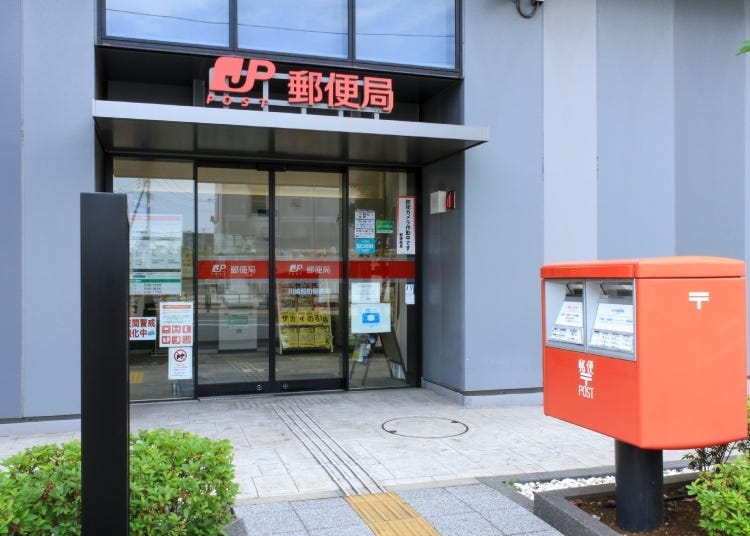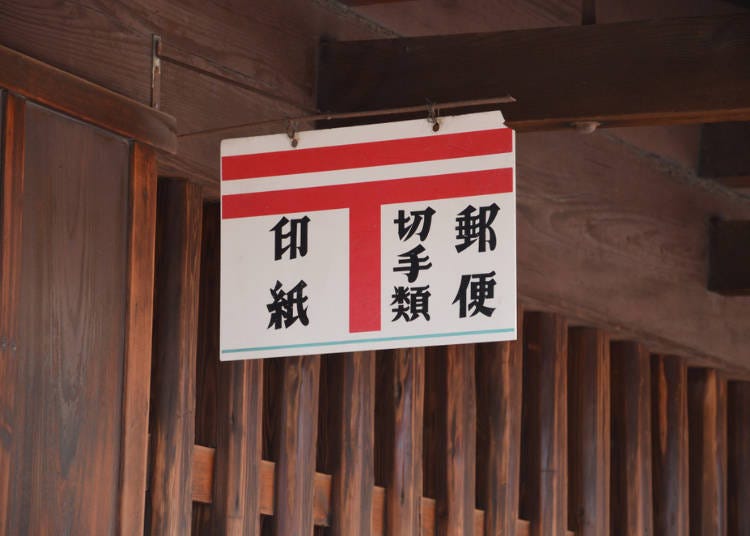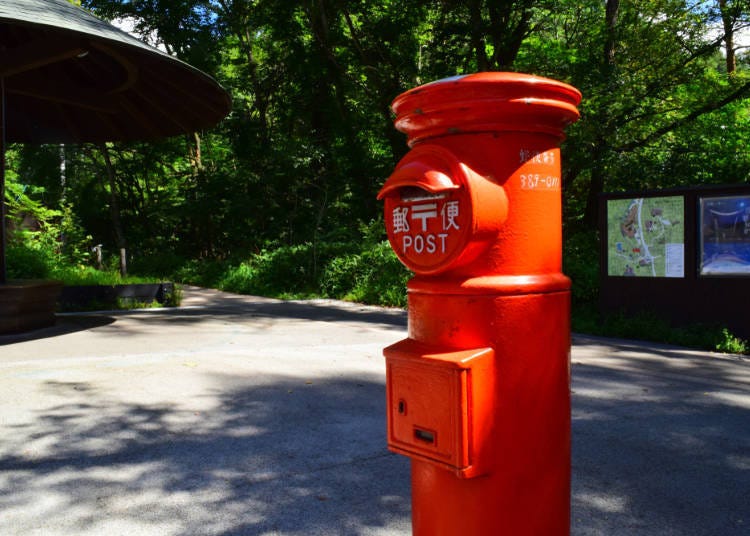
Sending Packages from Japan? Here’s What You Need to Know: EAD Customs Forms, New Rates & Sending Tips
- Written by: LIVE JAPAN Editor
Bringing back too many souvenirs or want to send a postcard to friends back home? Japan Post is your go-to solution—but with frequent updates to international mailing rules, like the mandatory EAD (Electronic Advance Data) customs form and newly revised rates, it's more important than ever to understand the process.
LIVE JAPAN has put together the most up-to-date and practical 2025 guide to international shipping from Japan. From letters and postcards to packages of all sizes, we cover current rates, size limits, and how to use Japan Post’s “International Mail My Page” service on both desktop and mobile. You'll also find key phrases and terms used in post offices so you can ship with confidence—no more getting stuck at the counter!
(Main image: PIXTA)
- Table of Contents
-
- Essential Japanese Terms for Mailing Letters & Packages
- Domestic Mailing & Shipping in Japan: Size Limits and Fees
- International Shipping from Japan: Size Limits, Methods & Pricing
- EAD Customs Form Now Required for All Japan Post International Packages
- Japan Post EAD Customs Form FAQ
- Key Japanese Postal Terms You Should Know
- Sample Conversations at the Post Office
Essential Japanese Terms for Mailing Letters & Packages

郵便物 (Yuubinbutsu): Mail or postal items in general.
手紙、はがき (Tegami, Hagaki): Letters and postcards. These fall into “standard-size mail” (teikei yuubinbutsu) and “non-standard-size mail” (teikeigai yuubinbutsu).
ミニレター(郵便書簡) (Mini Retaa, Yuubin Shokan): Mini letters—pre-stamped letter sheets for light correspondence.
切手 (Kitte): Stamps. Sending a postcard within Japan requires a 62-yen stamp; sending one abroad requires a 70-yen stamp. For special-sized postcards (non-standard), it's 120 yen domestically and 220 yen internationally.
書留 (Kakitome): Registered mail. Includes tracking and delivery record services, with partial compensation for loss or damage. Categories include standard (ippan kakitome), cash (genkin kakitome), simplified (kan'i kakitome), and international (kokusai kakitome).
速達 (Sokutatsu): Express mail—faster delivery within Japan.
追跡 (Tsuiseki): Tracking. If available, a tracking number (tsuiseki bangou) allows both sender and recipient to monitor delivery status.
ゆうパック (Yuu Pakku): Japan Post’s domestic parcel service, similar to convenience boxes in Taiwan. Includes options like heavy parcel (juuryou yuu pakku), airport delivery (kuukou yuu pakku), chilled (chirudo yuu pakku), and same-day delivery (toujitsu haitatsu yuu pakku).
空港ゆうパック (Kuukou Yuu Pakku): Airport Yu-Pack. Allows domestic shipping to designated airport counters in Japan for pickup.
チルドゆうパック (Chirudo Yuu Pakku): Chilled Yu-Pack. Ideal for sending perishable or refrigerated items.
当日配達ゆうパック (Toujitsu Haitatsu Yuu Pakku): Same-day Yu-Pack. Available in certain parts of Tokyo and Osaka—drop off by noon and the parcel arrives that same day if it’s within the same region.
Domestic Mailing & Shipping in Japan: Size Limits and Fees
手紙、はがき (Tegami, Hagaki):
Standard-size mail (teikei yuubinbutsu) refers to letters measuring between 9 cm × 14 cm and 12 cm × 1 cm × 23.5 cm, weighing up to 50 g. Postage: 110 yen.
Non-standard-size mail (teikeigai yuubinbutsu) is divided into two types:
・Within specifications (kikaku-nai): Up to 1 kg, max dimensions 25 cm × 3 cm × 34 cm. Fee: 140–750 yen.
・Outside specifications (kikaku-gai): Up to 4 kg, with the longest side under 60 cm and total dimensions (L+W+H) no more than 90 cm. Fee: 260–1,750 yen.
Cylindrical items shorter than 14 cm and narrower than 3 cm, or items smaller than 9 cm × 14 cm, are also treated as non-standard.
ミニレター/郵便書簡 (Mini Retaa / Yuubin Shokan):
Mini Letter: Up to 25 g. Fee: 85 yen.
ゆうパック (Yuu Pakku):
Yu-Pack allows parcels with a combined length, width, and height of up to 170 cm, and weight up to 25 kg. Rates vary by size and weight. You can estimate fees using the Japan Post online calculator.
重量ゆうパック (Juuryou Yuu Pakku):
For parcels weighing between 25 kg and 30 kg. Additional fee: 560 yen on top of regular Yu-Pack rates.
空港ゆうパック (Kuukou Yuu Pakku):
Lets you send packages to designated airport counters within Japan. Add 800 yen to regular Yu-Pack fees. For sizes 140 and up, use 160-size rates + 800 yen. Items over 150 cm in length are not accepted.
チルドゆうパック (Chirudo Yuu Pakku):
For refrigerated shipping. Accepts parcels up to 25 kg, with the longest side under 100 cm and total dimensions within 150 cm. Additional fees range from 225 to 2,100 yen depending on size.
当日配達ゆうパック (Toujitsu Haitatsu Yuu Pakku):
Same-day delivery for parcels up to 25 kg and within 170 cm in total dimensions. Requires an extra express delivery fee of 300–690 yen in addition to standard shipping costs.
International Shipping from Japan: Size Limits, Methods & Pricing

国際郵便 (Kokusai Yuubin):
Covers any item sent to an address outside Japan. Regular letters fall under tsuujou yuubinbutsu, while parcels are categorized as kogata housoubutsu, kogata housoubutsu with registered mail, or kokusai kobako.
通常郵便物 (Tsuujou Yuubinbutsu):
Letters and similar paper-based mail.
国際郵便はがき (Kokusai Yuubin Hagaki):
Postcards cost 85 yen within Japan and 100 yen internationally (airmail). Non-standard postcards due to shape or material are treated as “non-standard” and priced accordingly. Airmail: 100 yen; surface mail: 90 yen. (Note: not all countries support surface mail, and delivery is much slower—airmail is generally recommended.)
小形包装物 (Kogata Housoubutsu):
For parcels over 9 cm × 14 cm, with the longest side under 60 cm and total dimensions (L+W+H) within 90 cm, and weight under 2 kg.
・Airmail (non-registered): ~750 yen
・Airmail with international registered mail: ~1,160 yen
・Surface mail: ~430 yen
国際小包 (Kokusai Kozutsumi):
For parcels with the longest side under 150 cm, combined dimensions (L + 2×W + 2×H) under 300 cm, and weight under 30 kg.
Shipping options include EMS, airmail, SAL, and surface mail.
EMS/国際スピード郵便 (EMS / Kokusai Supiido Yuubin):
The fastest but most expensive option. Delivery typically takes 2–4 days.
Example: From Tokyo to Taiwan, 500 g = 1,450 yen (arrives in ~2 days).
航空便 (Kuukou Bin):
The second-fastest option, usually delivers within 6 days.
Example (Tokyo to Taiwan, 500 g):
・Kogata Housoubutsu: 750 yen
・Kogata Housoubutsu with registered mail: 1,160 yen
・Kokusai Kozutsumi: 1,700 yen
SAL (SAL):
Economy airmail using air transport but treated as surface mail on the ground.
(Note: SAL is not available for shipping to all countries.)
船便 (Funabin):
The slowest but cheapest shipping method. Applies to both Kogata Housoubutsu and Kokusai Kozutsumi. Delivery time ranges from 2 weeks to 1–3 months.
Example (Tokyo to Taiwan, 500 g):
・Kogata Housoubutsu: 430 yen
・Kokusai Kozutsumi: 1,600 yen
EAD Customs Form Now Required for All Japan Post International Packages
To enhance security, Japan Post began enforcing the use of Electronic Advance Data (EAD) for international shipments on January 1, 2021.
In short, whenever you send a package from Japan to another country—whether it’s via EMS, international parcel, small packet, international ePacket, or ePacket Light—you must complete a customs form online in advance.
Sending international packages from Japan involves four steps.
・Step 1: Prepare, pack, and weigh your parcel
・Step 2: Fill out the EAD customs form using Japan Post’s International Mail My Page Service (link below).
・Step 3: After completing the form, print it out and either attach it to your parcel yourself or hand both the form and package to the postal counter staff
・Step 4: Send your parcel from the post office
To help ease the process, Japan Post provides EAD form instructions in both English and Simplified Chinese. While it may seem a bit tedious at first, following the steps carefully should make it manageable.
We've also outlined answers to common questions in the next section—be sure to check them out before getting started.
Japan Post EAD Customs Form FAQ
・What’s the difference between the desktop and mobile versions of the “International Mail My Page Service”?
The desktop version requires user registration and access to a printer. Once you've filled out the EAD form, you must print it and bring it to the post office along with your parcel.
The mobile version can be used without registering. After filling out the form, you’ll receive a QR code via email. Just scan it at the post office’s self-service printer to print your form.
Note: The desktop and mobile versions are not connected. Even if you register for both, your information won’t be shared across accounts.
・Do I need to register for the “International Mail My Page Service”?
Yes, registration is required for the desktop version. It saves your information for future use, making it easier next time you ship.
The mobile version allows both guests and registered users. While guests can use it, signing up will save your data, which is helpful if you send packages internationally often.
・What information is required for the EAD form?
You’ll need to enter both the sender’s and recipient’s name, address, and phone number, along with details about the package contents and weight. Everything must be written in English.
・Can I skip the EAD form or handwrite it if I don’t have internet or a smartphone?
No—packages without a completed EAD customs form may be held or returned by customs. For all international parcels, submitting the EAD form online is required. If you choose not to complete the form, you accept full responsibility for delays, returns, and any related costs. In some cases, Japan Post may even refuse to accept your parcel.
*For example, shipments to the United States are strictly regulated. All packages sent to the U.S. must include EAD information. If the form isn’t submitted, Japan Post will not accept the shipment.
Since EAD is used to send package information electronically to customs in the destination country, handwritten forms are not a valid substitute. Using a handwritten form slows down processing and is essentially treated as if you didn’t submit one. To ensure delivery, it's strongly recommended to use the online system.
・If my package is delayed or returned, can I get a refund on shipping fees?
If delays or returns occur because the EAD form was missing or handwritten, the sender must cover the shipping costs—Japan Post will not issue a refund or accept liability.
For more information, Japan Post provides a detailed Q&A section on their website. If you’re unsure about anything, be sure to check their official pages below.
EAD Information Source (Available in English and Japanese):
Japan Post – EAD Requirements (English)
Japan Post – EAD Requirements (Japanese)
Key Japanese Postal Terms You Should Know

- ラベル (raberu)
- Shipping label or parcel form
- 差出(sasidasu)
- Sending or posting an item
- 受取(uketori)
- Receiving or collecting mail
- 配達(haitatsu)
- Delivery
- 手紙(tegami)
- Letter
- はがき(hagaki)
- Postcard
- 切手(kitte)
- Postage stamp
- 書留(kakitome)
- Registered mail
- 速達(sokutatsu)
- Express mail
- 追跡(tsuiseki)
- Tracking
- ゆうパック(yuupakku)
- Domestic parcel (Yu-Pack)
- 国際小包(kokusaikodutsumi)
- International parcel
Sample Conversations at the Post Office
Let’s go over some practical phrases you might use when sending mail at a post office in Japan.
(Japanese with romaji and English translation included)
Customer: 70円のはがきを三枚お願いします。
(70en no hagaki wo sanmai onegaishimasu / I’d like to buy three 70-yen postcards.)
Postal staff: かしこまりました。210円です。
(Kashikomarimashita / Certainly. That’ll be 210 yen.)
Customer: すみません、この小包の重さを計ってもらえますか?
(Sumimasen, kono kozutsumi no omosa wo hakatte moraemasu ka? / Excuse me, could you weigh this package for me?)
Postal staff: もちろんです。こちらに置いてお願いします。
(Mochiron desu. Kochira ni oite onegaishimasu. / Of course. Please place it here.)
Customer: この箱を台湾まで送りたいです。
(Kono hako wo Taiwan made okuritai desu / I’d like to send this box to Taiwan.)
Postal staff: 台湾宛ならば、EMSと航空便と船便をご利用できます。どちらになさいますか?
(Taiwan-ate naraba, EMS to kuukuu-bin to funa-bin wo go-riyou dekimasu. Dochira ni nasaimasu ka? / You can choose EMS, airmail, or surface mail. Which would you like to use?)
Customer: 一番早く着くのはどれですか?
(Ichiban hayaku tsuku no wa dore desu ka? / Which option is the fastest?)
Postal staff: 一番早いのはEMSです。
(Ichiban hayai no wa EMS desu / EMS is the fastest.)
Customer: 台湾に船便を使えばいつ着きますか?
(Taiwan ni funa-bin wo tsukaeba itsu tsukimasu ka? / If I use surface mail to Taiwan, when will it arrive?)
Postal staff: 台湾に送る場合は大体一ヶ月くらいかかります。
(Taiwan ni okuru baai wa daitai ikkagetsu kurai kakarimasu / It usually takes about a month to reach Taiwan.)
Customer: この手紙を__に送りたいです。運賃はいくらですか?
(Kono tegami wo ___ ni okuritai desu. Unchin wa ikura desu ka? / I’d like to send this letter to ___. How much is the postage?)
Postal staff: 780円でございます。
(780 en de gozaimasu / The postage is 780 yen.)
The LIVE JAPAN editorial team is a multinational group made up of native editors who have lived in Japan for over five years and Japanese editors who love to travel. Together, we share the best of Japan, offering cultural insights, historical context, event updates, and travel-friendly deals, to support your journey every step of the way.
*Prices and options mentioned are subject to change.
*Unless stated otherwise, all prices include tax.
Popular Tours & Activitiess
Recommended places for you
-

Kanzenkoshitsuyakinikutabehodai Gyugyu Paradise Sannomiya
Yakiniku
Kobe, Sannomiya, Kitano
-

Kambei Sannomiyahonten
Yakiniku
Kobe, Sannomiya, Kitano
-
Goods

Yoshida Gennojo-Roho Kyoto Buddhist Altars
Gift Shops
Nijo Castle, Kyoto Imperial Palace
-
Appealing

Rukku and Uohei
Izakaya
Sapporo / Chitose
-

Jukuseiniku-to Namamottsuarera Nikubaru Italian Nikutaria Sannomiya
Izakaya
Kobe, Sannomiya, Kitano
-

ISHIDAYA Hanare
Yakiniku
Kobe, Sannomiya, Kitano
-

Don't Miss Out! The One Thing You Must Do Before Shopping at Mitsui Shopping Park LaLaport: Get Your Max 10% OFF Coupon Book
-

Get Ready to Catch 'Em All! First Ever Permanent Outdoor Pokémon Park Opening Near Tokyo!
-

LaLaport TOKYO-BAY North Building Now Open: Shop, Dine & Enjoy Events at LaLa arena, Just 2 Stops from Disney
by: Wemmy Chau
-

Simply Oishii Wagashi School Discover Japanese Culture Through Wagashi: A Hands-On Experience!
by: Guest Contributor
-

2025 Autumn Colors Report: Kurobe Gorge Nearing Peak
by: Timothy Sullivan
-

Enjoy Japan's Gorgeous Winter Lights! Ride the Romancecar to Shonan no Hoseki Illumination
by: Guest Contributor
-
Ad

Japan Marks 150 Years of Railway Service! Our Report on the "Beyond Station Expo UENO" Cultural Event
-

Hokkaido Lavender Fields: 6 Best Places in Furano to See Japan's Dreamiest Purple Meadows
by: Nobuka Kawashima
-

5 Choice Stores for Familiar Breakfast Menus!
-

Visiting Hokkaido Japan: 14 Things to Know Before Traveling to Japan's Wild North
-

It’s GAKUENSAI Season: We’ve Visited Shinjuku’s Joint Campus Festival of Tokyo’s Universities!
-

5 Popular Things to do in Umeda - Osaka's Central Area!
by: WESTPLAN
- #best sushi japan
- #what to do in odaiba
- #what to bring to japan
- #new years in tokyo
- #best ramen japan
- #what to buy in ameyoko
- #japanese nail trends
- #things to do japan
- #onsen tattoo friendly tokyo
- #daiso
- #best coffee japan
- #best japanese soft drinks
- #best yakiniku japan
- #japanese fashion culture
- #japanese convenience store snacks















